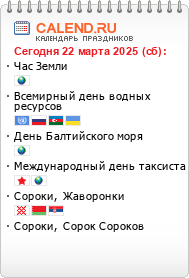
информация и фото с сайта http://www.infodog.ru
Считается, что для выведения этой породы, способной преследовать зайцев по следу с помощью чутья, а не по-зрячему, как фоксхаунд, норвежский заводчик Вильгельм Дункер скрестил в середине XIX века русских гончих и арлекинов с другими породами гончих, обладающих хорошим чутьем. Норвежская гончая популярна в странах Скандинавии.
Гончая Дункера
Сообщений 1 страница 11 из 11
Поделиться12008-07-04 21:37:16
Поделиться22008-07-04 21:37:54
Страна происхождения Норвегия
Исходное название Dunker
Другое название Norwegian Hound
Поделиться32008-07-04 21:38:08
Характеристика породы
Очень крепкая собака, способная адаптироваться к любому типу местности и любой погоде. Порода предназначена для длительного преследования зверя, а не для спринтерских рывков, Работает по зайцу. Ровный темперамент собаки и доброта делают норвежскую гончую хорошим компаньоном.
Поделиться42008-07-04 21:38:19
Содержание и уход
Требуются пространство для движения и физическая нагрузка. Необходима регулярная чистка шерсти щеткой.
Поделиться52008-07-04 21:38:39
Использование
Охотничья собака, собака-компаньон.
Поделиться62008-07-04 21:40:39
Внешний вид
Голова
Длинная, сухая. Кожа нигде не отстает от головы. Череп слегка выпуклый. Переход ото лба к морде выражен довольно хорошо. Морда прямая, длинная. Спинка носа прямая.
Глаза
Довольно большие. Темные. У голубой мраморной (арлекин) разновидности допускаются разноцветные глаза.
Уши
Средней длины. Посажены на уровне глаз. Висячие.Тонкие. Слегка скругленные на концах. Плоско свисают вниз вдоль головы.
Корпус
Чуть удлиненного формата. Шея довольно длинная, без подвеса. Грудь просторная. Ребра выпуклые. Поясница широкая, мускулистая. Круп с хорошей мускулатурой, слегка скошенный.
Конечности
С крепким костяком. Лапы компактные. Пальцы сводистые.
Хвост
Толстый у основания,утончается к концу. Должен быть продолжением линии верха.
Поделиться72008-07-04 21:41:11
Волосяной покров
Шерсть короткая, густая, прямая, не слишком мягкая.
Поделиться82008-07-04 21:41:20
Окрас
Черный или голубой мраморный (арлекин). Отметины оленьего и палевого цвета.
Поделиться92008-07-04 21:41:31
Высота в холке
Кобели: 50 — 55 см. Суки: 48 —53см.
Вес
20 - 25 кг.
Поделиться102008-07-04 21:42:00
Стандарт утвержден в 1972 г.
Поделиться112008-07-04 21:42:58
FCI-Standard N° 203 / 12. 03. 1999 / GBNORVEGIAN HOUND(Dunker)
ORIGIN : Norway.
DATE OF PUBLICATION OF THE ORIGINAL VALID STANDARD : 12.03.1999.
UTILIZATION : Scenthound.
CLASSIFICATION F.C.I. : Group 6 Scenthounds and related breeds.
Section 1.2 Medium-sized Hounds.
With working trial.
GENERAL APPEARANCE : Medium sized, distinctly rectangular, powerfully built, but should not appear heavy. Should convey the impression of endurance.
IMPORTANT PROPORTIONS : Depth of brisket approximately half the height at withers.
HEAD : Head not to be carried highly. Clean and noble with good length and parallel lines, not wedge-shaped.
CRANIAL REGION :
Skull : Slightly domed, prominent occiput. Provided the muzzle is long and well developed, a somewhat powerful skull is permissible, in males in particular, if the head does not lose its parallel planes.
Stop : Defined, but not deep or abrupt.
FACIAL REGION :
Nose : Black. Wide nostrils.
Muzzle : Rather long than short, squarely cut. Straight and evenly broad nasal bridge.
Jaws/Teeth : Scissor bite. Complete dentition.
Cheeks : Clean cheeks without prominent cheek bones.
Eyes : Dark. Round in appearance. Rather large, but not protruding. Bright and expressive with a calm and earnest expression. Eyelids close fitting. Wall eyes are permitted in blue marbled (dappeld) dogs.
Ears : Medium high set, rather low than high. Smooth, moderately wide, tapering, rounded at the end. Flat without folds. Hanging close to head. Long enough to extend half-way along the muzzle when pulled forward.
NECK : Fairly long, without noticeable throatiness.
BODY :
Topline : Level.
Back : Straight, firm and not too long.
Loin : Broad and muscular, not roached.
Croup : Slightly sloping, muscular, not too short.
Chest : Capacious chest with well sprung ribs; the back ribs should be particularly well developed, making the brisket appear long.
Underline / belly : Slightly tucked up.
TAIL : Set on level with the topline. Thick at the root, tapering towards the end. The tail should be straight and carried in a slight upward curve, reaching to the hock or slightly below.
LIMBS
FOREQUARTERS :
General appearance : Strong, dry and sinewy forelegs.
Shoulders : Muscular, long and sloping shoulder blades, lying close to the chest, closely set together at the top. Well angulated shoulder and elbow joints.
Forearm : Straight.
Pastern : Slightly sloping.
Feet : Arched and well-knit feet, well covered with hair between the toes. Firm pads. The feet should point straight forward.
HINDQUARTERS :
General appearance : Well angulated. Stand parallel, not crouched nor cow-hocked. Dewclaws should be removed.
Upper thigh : Broad.
Stifle : Well angulated.
Lower thigh : Broad.
Hocks : Dry and low set, broad seen from the side.
Feet : Arched and well-knit, well covered with hair between the toes. Firm pads. The feet should point straight forward.
GAIT : Free movement, covering ground. Parallel from behind, not crouched nor cow-hocked.
COAT
HAIR : Straight, hard, dense and not too short coat. The back of the thighs and the tail may be somewhat more heavily coated, provided the coat is otherwise particularly good.
COLOUR : Black or blue marbled (dappled) with pale fawn and white markings. Warm brown or predominant black reaching from the muzzle and beyond the hock joint with so called black mask is less desirable. Overmarked white where the white colour reaches out on the shoulders, on the underside of the belly and on legs (socks) is accepted as correct marking.
SIZE :
Height at the withers : Dogs : 50 - 55 cm, ideally 53 cm.
Bitches : 47 - 53 cm, ideally 50 cm.
FAULTS : Any departure from the foregoing points should be considered a fault and the seriousness with which the fault should be regarded should be in exact proportion to its degree.
• Colour : Should the white colour reach the saddle on black/pale fawns, or white spots in the dappled colour, the prize must be lower according to the amount of white.
ELIMINATING FAULTS :
• Aggressiveness.
• Predominantly white colour (50% or more).
Any dog clearly showing physical or behavioural abnormalities shall be disqualified.
N.B. : Male animals should have two apparently normal testicles fully descended into the scrotum.
































